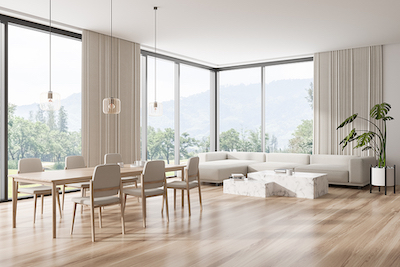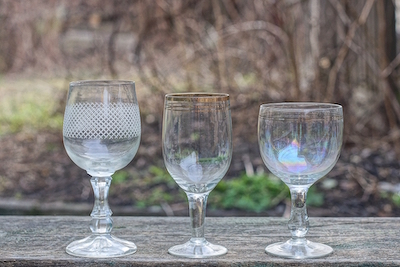When it comes to choosing the right flooring for your home, hardwood floors have long been considered the gold standard. They offer a timeless beauty, warmth, and durability that few other flooring materials can rival. However, as technology and manufacturing processes have advanced, engineered hardwood floors have emerged as a strong contender in the flooring market. This article delves into the differences between engineered hardwood floors and traditional hardwood floors, and aims to provide a comprehensive comparison to help you make an informed decision for your home.
Definition and Construction
- Hardwood Floors
Hardwood floors are made from solid planks of wood cut from a single piece of timber. They are typically 3/4 inches thick, although thinner options are also available. Popular species of hardwood used for flooring include oak, maple, walnut, hickory, and cherry. Hardwood floors are highly prized for their natural beauty and authenticity, as well as their durability and long lifespan.
- Engineered Hardwood Floors
Engineered hardwood floors consist of multiple layers of material bonded together. The top layer, or veneer, is made from a thin slice of real hardwood, giving the floor the appearance of traditional hardwood. The layers beneath the veneer are made from high-quality plywood or high-density fiberboard (HDF), which provides additional strength and stability. The thickness of the veneer varies depending on the manufacturer and the quality of the product.
Durability and Lifespan
- Hardwood Floors
Hardwood floors are known for their long-lasting durability. With proper care and maintenance, they can last for generations. The solid construction allows for hardwood floors to be sanded and refinished multiple times, which can restore their appearance and remove surface scratches or dents. This process can be done every 10-20 years, depending on the wear and tear the floor experiences.
- Engineered Hardwood Floors
Engineered hardwood floors also offer excellent durability, thanks to their multi-layered construction. The plywood or HDF core provides added stability, making them less susceptible to warping and shrinking due to changes in temperature or humidity. However, the lifespan of engineered hardwood floors can be shorter than traditional hardwood floors, primarily due to the thickness of the veneer. Thicker veneers allow for more sanding and refinishing, but generally, engineered hardwood floors can only be sanded 1-3 times, depending on the product. With proper care, engineered hardwood floors can last 20-50 years, or even longer.
Moisture Resistance
- Hardwood Floors
Solid hardwood floors are more susceptible to moisture damage, as they can expand and contract with changes in humidity. This can lead to warping, cupping, or gapping, and it is not recommended to install hardwood floors in moisture-prone areas such as basements or bathrooms.
- Engineered Hardwood Floors
Engineered hardwood floors have a higher moisture resistance due to their layered construction. The plywood or HDF core helps to minimize expansion and contraction, making them more suitable for installation in areas with varying humidity levels. While not waterproof, engineered hardwood floors are a better choice for moisture-prone areas compared to traditional hardwood floors.
Installation
- Hardwood Floors
Installing hardwood floors typically requires a professional installer, as the process can be quite involved. Solid hardwood floors are generally installed using nails or staples, and they require a wooden subfloor for proper installation. Due to their sensitivity to moisture, hardwood floors need to acclimate to the environment of the installation area for several days before being installed.
- Engineered Hardwood Floors
Engineered hardwood floors offer more flexibility in installation, as they can be installed using various methods, including nailing, stapling, gluing, or floating. This makes them suitable for a wider range of subfloor materials, including concrete, plywood, and even existing flooring. The installation process is generally faster and less complex than solid hardwood floors, making it more accessible to DIY enthusiasts. However, hiring a professional installer is still recommended for the best results.
Cost
- Hardwood Floors
The cost of hardwood flooring can vary greatly depending on the species of wood, the grade, and the finish. On average, traditional hardwood floors can cost between $5 and $15 per square foot for materials, with installation costs ranging from $3 to $5 per square foot. High-end hardwood species or custom finishes can drive the price even higher. Additionally, the long-term maintenance costs, such as sanding and refinishing, should be factored into the overall price.
- Engineered Hardwood Floors
Engineered hardwood floors are generally more affordable than traditional hardwood floors, with prices ranging from $3 to $10 per square foot for materials. Installation costs are also typically lower, at $2 to $4 per square foot. However, it is essential to consider the quality of the product when comparing costs, as cheaper engineered hardwood options may have a thinner veneer and a shorter lifespan. While engineered hardwood floors may have lower upfront costs, they may require more frequent replacement than solid hardwood floors.
Environmental Impact
- Hardwood Floors
Hardwood floors have a larger environmental footprint compared to engineered hardwood floors, as they require more wood to produce. The use of exotic hardwood species can contribute to deforestation and habitat loss in certain regions. However, many hardwood flooring manufacturers now source their wood from responsibly managed forests or offer reclaimed wood options. Look for certifications from organizations such as the Forest Stewardship Council (FSC) to ensure the wood comes from sustainable sources.
- Engineered Hardwood Floors
Engineered hardwood floors use less wood in their production, making them a more eco-friendly option. The plywood or HDF core is often made from fast-growing, renewable wood species, reducing the environmental impact. Additionally, engineered hardwood floors generate less waste during production, as the veneer can be created using smaller or irregular pieces of wood. However, it is essential to consider the manufacturing process and the adhesives used in the production of engineered hardwood floors, as some may contain harmful chemicals. Look for products that meet strict indoor air quality standards, such as those certified by the GREENGUARD Environmental Institute or the California Air Resources Board (CARB).
When choosing between engineered hardwood floors and traditional hardwood floors, it is essential to consider factors such as durability, moisture resistance, installation, cost, and environmental impact. While solid hardwood floors offer a classic beauty and long lifespan, engineered hardwood floors provide more versatility, moisture resistance, and affordability. Ultimately, the best choice will depend on your personal preferences, budget, and the specific needs of your home. By understanding the differences between these two types of flooring, you can make a well-informed decision that will enhance the beauty and value of your living space for years to come.














